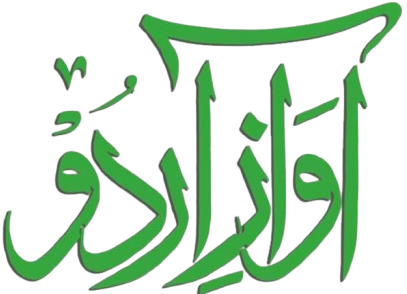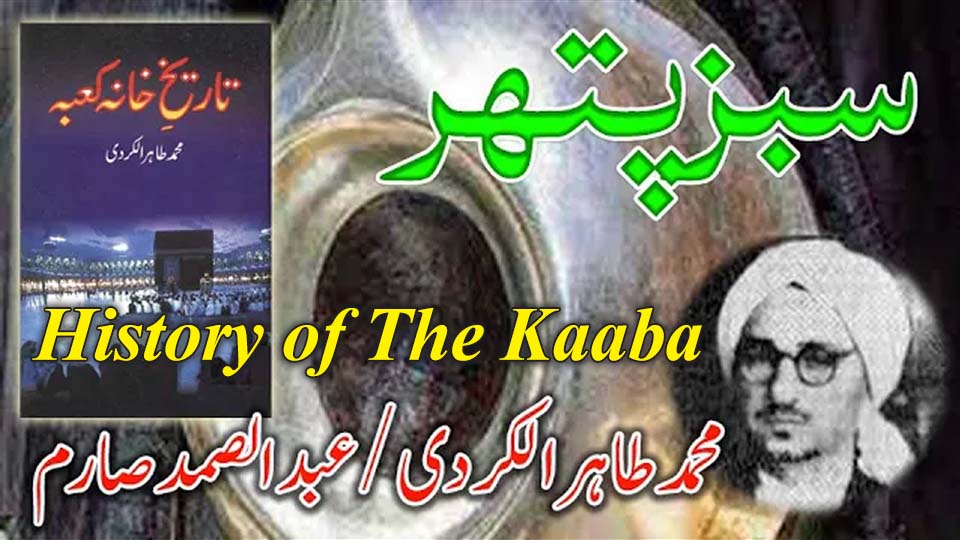History of Kaaba in Urdu is a subject that captures both historical depth and spiritual reverence. The sacred sanctuary, known as the Kaaba, located in the heart of Makkah, has been a focal point for countless generations. From the times of Prophet Ibrahim (AS) and Ismail (AS) to the present day, the Kaaba has undergone numerous phases of construction, renovation, and transformation, making it one of the most revered and mysterious structures in human history.
Among the many fascinating elements in the history of Kaaba in Urdu, one particular feature stands out: the Green Stone beneath the Kaaba’s waterspout — Mizab al-Rahmah. This element, though less known in mainstream narratives, carries profound spiritual and architectural significance.
A Brief Overview of the Sacred History
The history of Kaaba in Urdu often begins with its earliest reference in the time of Prophet Ibrahim (AS), who, along with his son Ismail (AS), was commanded to rebuild the sacred house. Over the centuries, dynasties, rulers, and pilgrims have preserved, rebuilt, and adorned the Kaaba, leaving behind layers of historical legacy.
Muhammad Tahir al-Kurdi, a noted Arab historian and calligrapher born in Makkah in 1903, dedicated his life to Islamic history, particularly to topics surrounding the Kaaba, Qur’an, and pilgrimage. His Arabic masterpiece “Al-Tareekh al-Qawim li Makkah wa Baytullah al-Karim” stands as a monumental contribution to documenting this sacred history. Its Urdu translation, “Tareekh-e-Khana Kaaba”, by Abdul Samad Sarim, is a treasure for Urdu readers seeking authentic Islamic scholarship.
The Green Stone: Hidden Gem Under the Mizab
A particularly intriguing chapter in the history of Kaaba in Urdu is about the green stone placed beneath the Mizab al-Rahmah — the golden waterspout from which rainwater flows off the roof of the Kaaba into Hijr Ismail.
According to historical accounts featured in Tareekh-e-Khana Kaaba, this green stone is not a symbolic grave of Prophet Ismail (AS), as commonly misunderstood, but a gift sent from Egypt in 241 AH. The stone is oval-shaped, along with a second semicircular piece. Their unique structure, size, and colour, one of jade green, have been described in detail by al-Kurdi with scholarly precision.
Why the Stone Lies Under the Waterspout?
The history of Kaaba in Urdu highlights that this stone lies under the Mizab because that area is considered one of the most spiritually potent places within the entire Masjid al-Haram. It is believed to be a place of divine mercy — hence the name Mizab al-Rahmah, or “Gutter of Mercy”.
As per narrations from Abdullah ibn Abbas (RA), praying beneath the Mizab was a practice of the righteous. Even the Prophet Muhammad ﷺ is reported to have acknowledged the exceptional blessings of this spot.
Symbolism and Spiritual Meaning
These green stones represent more than ornamental beauty — they are symbolic of the Kaaba’s layered spiritual legacy. The presence of other colored stones like blue and yellow, also documented in al-Kurdi’s book, further enriches our understanding of the sacred architecture.
The history of Kaaba in Urdu is incomplete without appreciating these small but powerful relics that connect us to centuries of devotion, craftsmanship, and reverence. Their placement under one of the holiest parts of the Kaaba illustrates the harmony of structure and sanctity.
The Man Behind the History – Muhammad Tahir al-Kurdi
A pioneer in Islamic historiography, calligraphy, and Quranic studies, al-Kurdi’s contributions are invaluable. His transcription of the Qur’an, titled Mushaf Makkah, is known for its calligraphic excellence. Besides his work on the Kaaba, he wrote extensively on Maqam Ibrahim, the Qur’an’s revelation history, and unique writing practices in Arabic script.
Learn and Listen: AwazeUrdu Brings it to Life
For readers who want to listen to the history of Kaaba in Urdu, AwazeUrdu has brought selected chapters like “Sabz Pathar” to life through engaging video narration. These efforts make complex historical facts more accessible and relatable to a wider audience.
Conclusion: The Living Legacy of a Sacred Stone
The history of Kaaba in Urdu is not merely a timeline of renovations or rulers, it is a living narrative of faith, art, and sacred geography. The green stone beneath the Kaaba is a powerful metaphor: an unassuming piece that holds centuries of reverence, gifted across borders and cultures, resting silently under the most blessed spot on earth.
If you’re interested in reading this book, click the link below for a free download.
https://drive.google.com/file/d/1KVwxGQhfZ5oNmFh1ImfIwKV0jYsWyGVp/view?usp=sharing
If you’d like to listen to this book in audio format, click the CONTACT button below to get in touch with the AwazeUrdu team to order the audiobook.
You can also watch the same video on these social media platforms.
Whether you are a student of history, a seeker of spiritual connection, or simply curious, this lesser-known chapter adds an unforgettable dimension to the story of the Kaaba.
خانہ کعبہ نہ صرف مسلمانوں کے لیے قبلۂ اول اور روحانیت کا مرکز ہے بلکہ انسانی تاریخ کا وہ مقدس مقام بھی ہے جو صدیوں سے دنیا بھر کی نظریں اپنی طرف متوجہ کرتا رہا ہے۔ جغرافیائی اعتبار سے مکہ مکرمہ کا شہر تین برّاعظموں کے سنگم پر واقع ہے، جہاں نہ صرف دینی شعائر پروان چڑھے بلکہ تہذیب و تمدن کا ایک زندہ ورثہ بھی آباد رہا۔ خانہ کعبہ کی قدیم تاریخ، حضرت ابراہیم علیہ السلام اور حضرت اسماعیل علیہ السلام سے لے کر آج تک تعمیرات، تبدیلیوں اور تجدیدات کی ایک نہ ختم ہونے والی روایت رکھتی ہے۔ اسی تاریخی تسلسل کو ضبطِ تحریر میں لانے کا عظیم کام عرب مؤرخ محمد طاہر الکردی نے اپنی بے مثال عربی تصنیف “التاریخ القویم لمکة و بیت اللہ الکریم” میں انجام دیا۔
محمد طاہر بن عبدالقادر الکردی المکی 1903ء (1321ھ) میں مکہ مکرمہ میں پیدا ہوئے۔ ان کے آبا و اجداد کا تعلق کردستان سے تھا جو بعد ازاں مکہ میں مقیم ہوئے۔ انہوں نے مکہ اور قاہرہ کے علما سے علومِ دینیہ حاصل کیے اور اپنی زندگی کو تاریخ، قرآن، حج، مناسک اور خانہ کعبہ سے متعلق موضوعات کی تحقیق کے لیے وقف کر دیا۔ وہ نہ صرف ایک مؤرخ تھے بلکہ عرب دنیا میں ممتاز خطاط بھی شمار ہوتے تھے۔ ان کا تحریر کردہ قرآن “مصحف مکہ مکرمہ” اپنی خوشخطی کے باعث خاص مقام رکھتا ہے۔ ان کی دیگر معروف کتب میں مقامِ ابراہیم، تفسیر مکی، تاریخ قرآن، اور غرائب رسم و حکمت شامل ہیں۔ وہ اپنی تحقیقی دیانت، علمی پختگی اور فنِ کتابت میں یکتائے روزگار مانے جاتے ہیں۔
محمد طاہر الکردی کی چھ جلدوں پر مشتمل عربی کتاب
“التاریخ القویم لمکة و بیت اللہ الکریم”
کا اردو ترجمہ عبدالصمد صارم نے “تاریخِ خانہ کعبہ” کے عنوان سے کیا، جو اردو قارئین کے لیے ایک بیش قیمت تحفہ ہے۔ یہ کتاب 2010ء میں اردو میں شائع ہوئی اور اپنے مخصوص موضوع کی بنا پر بے حد مقبول ہوئی۔ کتاب کا دائرہ مکمل تاریخی انسائیکلوپیڈیا کی شکل میں نہیں بلکہ مخصوص اور منتخب پہلوؤں پر مبنی ہے — جیسے کہ خانہ کعبہ کی تعمیرات، فضائل، مقام ابراہیم، حجر اسماعیل، غار کعبہ، اور ان سے متعلق روایات و واقعات۔
اس کتاب کا ایک باب “سبز پتھر” کے عنوان سے آوازِاردو نے اپنی ایک ویڈیو میں سنایا ہے، جس میں حجر اسماعیل اور خانہ کعبہ کے پرنالے کے نیچے رکھے گئے سبز پتھروں کا تفصیلی ذکر ملتا ہے۔ یہ پتھر، جو دو حصوں پر مشتمل ہیں، تاریخی روایات کے مطابق حضرت اسماعیل کی قبر کی علامت نہیں بلکہ 241ھ میں بطور تحفہ مصر سے بھیجے گئے تھے۔ ایک بیضاوی شکل کا اور دوسرا نصف دائرے کی صورت میں ہے۔ ان کی بناوٹ، شکل و حجم، رنگت، اور وقت گزرنے کے اثرات سب نہایت باریک بینی سے بیان کیے گئے ہیں۔
کتاب میں بتایا گیا ہے کہ یہ دونوں پتھر مسجد الحرام کے مقدس ترین مقام — میزابِ رحمت — کے نیچے اس لیے رکھے گئے کہ یہ مقام دعاؤں کی قبولیت اور مغفرت کا مرکز ہے۔ ابن عباس رضی اللہ عنہ سے منقول ہے کہ یہاں نماز پڑھنا صالحین کا طریقہ ہے، اور نبی کریم ﷺ نے بھی اس جگہ دعا کی فضیلت بیان فرمائی ہے۔ یہ پتھر صرف ظاہری جمالیات کا نہیں بلکہ روحانی تاثیر کا مظہر بھی ہیں۔ ان کے ساتھ رکھے گئے دیگر زرد اور نیلے رنگ کے قیمتی پتھروں کی بھی نہایت نادر تفصیلات پیش کی گئی ہیں، جو مکہ کی تعمیراتی اور روحانی تاریخ کے گوہرِ نایاب ہیں۔
“تاریخِ خانہ کعبہ” ایک نایاب تحقیقی دستاویز ہے جو نہ صرف مقدس مقام کی تاریخی جزئیات کو محفوظ کرتی ہے بلکہ اردو زبان کے قارئین کو اس عظیم ورثے سے جوڑتی ہے۔ محمد طاہر الکردی کی یہ خدمت تاریخِ کعبہ کو سمجھنے کے خواہاں افراد کے لیے ایک بنیادی حوالہ بن چکی ہے۔ آوازِاردو کی جانب سے اس کے اقتباسات کی پیشکش کتاب کو مزید قابلِ فہم اور دلنشین بناتی ہے۔ یہ کتاب ایک ایسے مورخ کی آواز ہے جو روحانیت، تاریخ اور جمالیات کو ایک تحریر میں یکجا کرنے کا ہنر جانتا تھا۔

